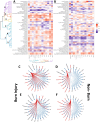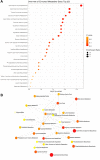Systemic long-term metabolic effects of acute non-severe paediatric burn injury
- PMID: 35906249
- PMCID: PMC9338081
- DOI: 10.1038/s41598-022-16886-w
Systemic long-term metabolic effects of acute non-severe paediatric burn injury
Abstract
A growing body of evidence supports the concept of a systemic response to non-severe thermal trauma. This provokes an immunosuppressed state that predisposes paediatric patients to poor recovery and increased risk of secondary morbidity. In this study, to understand the long-term systemic effects of non-severe burns in children, targeted mass spectrometry assays for biogenic amines and tryptophan metabolites were performed on plasma collected from child burn patients at least three years post injury and compared to age and sex matched non-burn (healthy) controls. A panel of 12 metabolites, including urea cycle intermediates, aromatic amino acids and quinolinic acid were present in significantly higher concentrations in children with previous burn injury. Correlation analysis of metabolite levels to previously measured cytokine levels indicated the presence of multiple cytokine-metabolite associations in the burn injury participants that were absent from the healthy controls. These data suggest that there is a sustained immunometabolic imprint of non-severe burn trauma, potentially linked to long-term immune changes that may contribute to the poor long-term health outcomes observed in children after burn injury.
© 2022. The Author(s).
Conflict of interest statement
The authors declare no competing interests.
Figures



References
Publication types
MeSH terms
Substances
LinkOut - more resources
Full Text Sources
Medical

